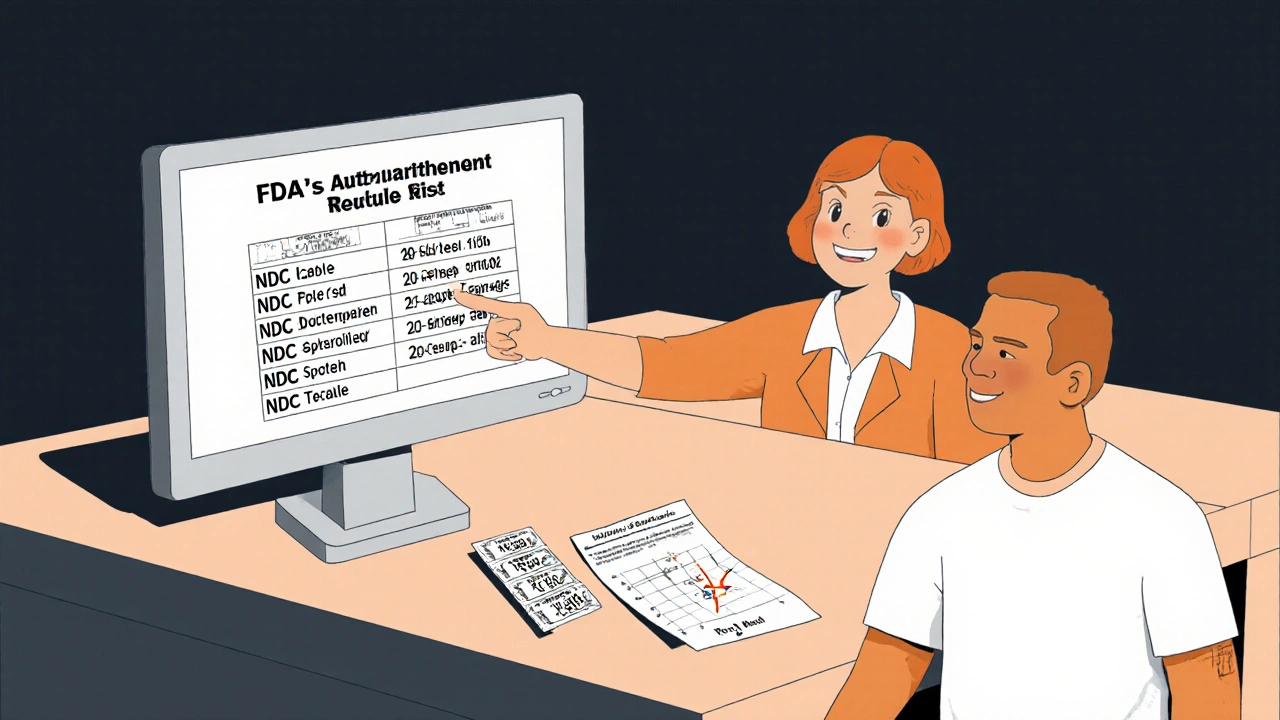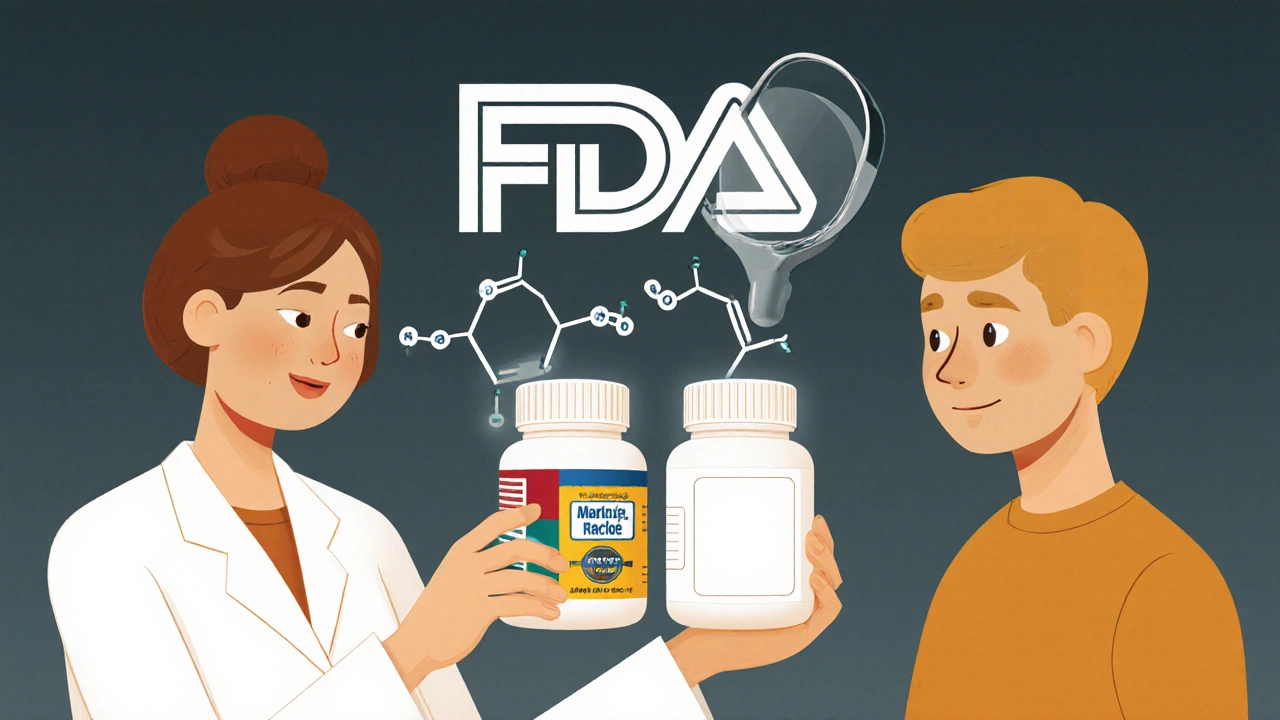When a patient walks into the pharmacy with a prescription for a brand-name drug, the first question isn’t always about price-it’s about trust. They’ve been on that medication for months, maybe years. They know how it looks, how it makes them feel. So when you suggest a generic, their eyes narrow. Authorized generics aren’t just another generic. They’re the exact same pill, made by the same company, in the same factory-but without the brand name on the label. And that difference matters more than most patients realize.
What Exactly Is an Authorized Generic?
An authorized generic is not a copy. It’s the original. The brand-name manufacturer produces it, uses the same active ingredients, the same fillers, the same coating, the same everything. The only changes? The label, the color, maybe the shape. The FDA defines it clearly: it’s a drug approved under the original brand’s New Drug Application, just sold under a different name. You won’t find it listed in the Orange Book as a separate entry because it doesn’t need to be-it’s already proven safe and effective as the brand.
Think of it like buying a Coca-Cola bottle with a white label instead of red. Same formula, same taste, same factory. But now it’s cheaper. That’s what authorized generics do for patients. And unlike regular generics-which can have different inactive ingredients like gluten, lactose, or dyes-authorized generics match the brand down to the last excipient. For someone with celiac disease, a shellfish allergy, or a religious restriction on animal-derived gelatin, that’s not a small detail. It’s a safety line.
When Should You Recommend Them?
Not every generic substitution is equal. Here are the three situations where authorized generics aren’t just a good option-they’re the best one.
- Patients with known sensitivities to inactive ingredients. Regular generics often swap out fillers to cut costs. One brand might use cornstarch; another might use wheat starch. For a patient with celiac disease, that switch can trigger real symptoms. An authorized generic? It keeps the same ingredients as the brand they’ve tolerated for years. Same with lactose intolerance or allergies to dyes like FD&C Red No. 40. If the brand worked for them, the authorized generic will too.
- Narrow therapeutic index (NTI) drugs. These are medications where tiny changes in blood levels can mean the difference between control and crisis. Think warfarin, levothyroxine, phenytoin, or cyclosporine. Studies show 3-5% of patients experience problems after switching to a regular generic-even if it’s labeled “therapeutically equivalent.” Why? Bioequivalence standards allow for up to 20% variation in absorption. For NTI drugs, that’s too much. Authorized generics eliminate that risk because they’re chemically identical. No guesswork. No monitoring spikes.
- Modified-release formulations. Extended-release pills, delayed-release capsules, osmotic pumps-these aren’t just about swallowing a tablet. They’re about how the drug releases over time. Regular generics sometimes can’t perfectly replicate the delivery system. Authorized generics? They use the same technology. If your patient is on a 12-hour extended-release version of metformin or oxycodone, and they start feeling off after switching, an authorized generic is the safest reset.
And don’t forget this: if a patient says, “I switched to the generic and now I feel weird,” don’t assume it’s all in their head. A 2021 survey of 1,200 community pharmacists found that 12% of patients reported unexpected side effects or reduced effectiveness after switching to a regular generic. Often, the fix isn’t going back to the brand-it’s switching to the authorized generic version of it.
How to Spot an Authorized Generic
You can’t tell by looking at the pill. A white oval might be the brand. The same white oval, now with a different imprint, could be the authorized generic. So how do you know?
Check the FDA’s quarterly list. It’s updated every three months and lists every authorized generic approved in the U.S.-including the brand name, the manufacturer, and when it hit the market. As of September 2023, there were 257 authorized generics on that list. That’s about 5% of all brand-name drugs with generic alternatives. Most are oral tablets or capsules-87% of them.
You can also check the National Drug Code (NDC). The labeler code on the authorized generic will match the brand manufacturer’s code-like Pfizer, Merck, or Janssen-not a typical generic company like Teva or Mylan. If you see Prasco or Greenstone as the labeler, that’s a clue too. Those are companies that specialize in authorized generics and work directly with brand manufacturers.
And remember: just because a drug has a generic doesn’t mean it has an authorized version. Only about one in twenty brand-name drugs offers one. So don’t assume. Always verify.
Insurance and Cost: The Hidden Catch
Here’s the part most pharmacists don’t talk about: insurance doesn’t always treat authorized generics like generics.
Yes, they cost 20-80% less than the brand. But pharmacy benefit managers (PBMs) often put them in the brand-name tier. A 2022 study found that 63% of PBMs classify authorized generics as brand-name drugs for reimbursement purposes. That means your patient’s copay might be $50 instead of $10-even though they’re getting the exact same medication.
So what do you do? Always check the patient’s formulary before suggesting it. Call the insurer. Ask: “Is this authorized generic covered under generic or brand tier?” If it’s in the brand tier, you might be doing them a disservice by pushing it. But if it’s in the generic tier? You’ve just saved them hundreds a year.
And don’t forget: some patients get brand-name drugs through manufacturer coupons or patient assistance programs. Those often cap out at $10-$15 per month. An authorized generic might be $5. That’s not a small difference-it’s life-changing for someone on a fixed income.
What to Tell Your Patients
Patients don’t trust change. Especially when their pill looks different. A 2022 study found that 27% of patients stopped taking their medication after switching to a generic that looked unfamiliar. But when pharmacists explained the change, that number dropped to 8%.
So here’s what to say:
- “This is the same medicine your doctor prescribed, made by the same company, with the same ingredients. The only difference is the label.”
- “It’s cheaper-often by half or more-but just as safe and effective.”
- “If you’ve had issues with other generics before, this one might work better because it’s identical to your brand.”
- “If you’re worried about gluten, dairy, or dyes, this one matches your brand exactly. No surprises.”
Hand them the FDA list or print out a comparison sheet. Show them the NDC numbers side by side. Make it real. Make it clear. And always follow up in a week. Ask: “How’s the new pill working for you?”

Legal and Documentation Rules
Legally, you can substitute an authorized generic unless the prescriber wrote “dispense as written” or “no substitution.” In 42 states, that’s allowed without notifying the doctor. But 18 states require you to inform the prescriber for any generic substitution-including authorized generics.
Document everything. Use the correct modifier code-usually “DA” for drug substitution. Keep a record showing the authorized generic is therapeutically equivalent. If you’re in a hospital or long-term care setting, your pharmacy system should auto-flag these substitutions. If not, create a checklist.
And never assume. Always confirm the authorized generic matches the brand’s formulation. Rarely, manufacturers tweak inactive ingredients when launching an authorized version. The FDA will notify if that happens. But it’s your job to check.
The Bigger Picture
Authorized generics are growing. Since 2010, their numbers have increased by 18% every year. More manufacturers are offering them. More patients are asking for them. GoodRx reports a 47% jump in consumer searches for “authorized generics” between 2021 and 2022.
That’s not a trend. It’s a shift. As healthcare moves toward value-based care, pharmacists who understand this tool will be the ones who keep patients on therapy, reduce hospitalizations from medication errors, and cut costs without compromising safety.
It’s not about pushing the cheapest option. It’s about pushing the right option. For some patients, that’s the brand. For others, it’s the regular generic. And for a growing number? It’s the authorized generic.
Are authorized generics the same as brand-name drugs?
Yes, authorized generics are chemically identical to the brand-name drug. They’re made by the same manufacturer, in the same facility, with the exact same active and inactive ingredients. The only differences are the label, packaging, and price. They’re not copies-they’re the original product sold under a different name.
Why do authorized generics cost less than the brand?
They cost less because they don’t carry the marketing, advertising, or patent protection costs of the brand-name version. The manufacturer produces them using the same formula but sells them without the brand name, so they can be priced lower. Savings typically range from 20% to 80% compared to the brand.
Can I substitute an authorized generic without the prescriber’s permission?
In most cases, yes. Unless the prescription says “dispense as written” or “no substitution,” pharmacists can substitute an authorized generic in 42 U.S. states. However, 18 states require notification to the prescriber for any generic substitution, including authorized generics. Always check your state’s pharmacy board rules.
Why does my insurance charge me more for an authorized generic than a regular generic?
Some pharmacy benefit managers (PBMs) classify authorized generics under the brand-name tier instead of the generic tier in their formularies. This means your copay might be higher-even though the medication is identical. Always check your plan’s formulary before recommending it. If it’s listed as a brand, ask your patient if they’d prefer the regular generic instead.
How do I know if a drug has an authorized generic?
Check the FDA’s quarterly updated list of authorized generics on their website. You can also look up the National Drug Code (NDC) of the brand and compare it to the generic. If the labeler code matches the brand manufacturer (like Pfizer or Merck), it’s likely an authorized generic. Some wholesalers also provide this info-don’t rely on memory.
Are authorized generics safe for patients with allergies?
Yes-often safer than regular generics. Regular generics can change inactive ingredients like gluten, lactose, or dyes to reduce cost. Authorized generics retain the exact same inactive ingredients as the brand-name drug. If a patient is allergic to a filler in their brand, the authorized generic will be safe. Always confirm the ingredient list matches the brand before recommending.

Comments (11)